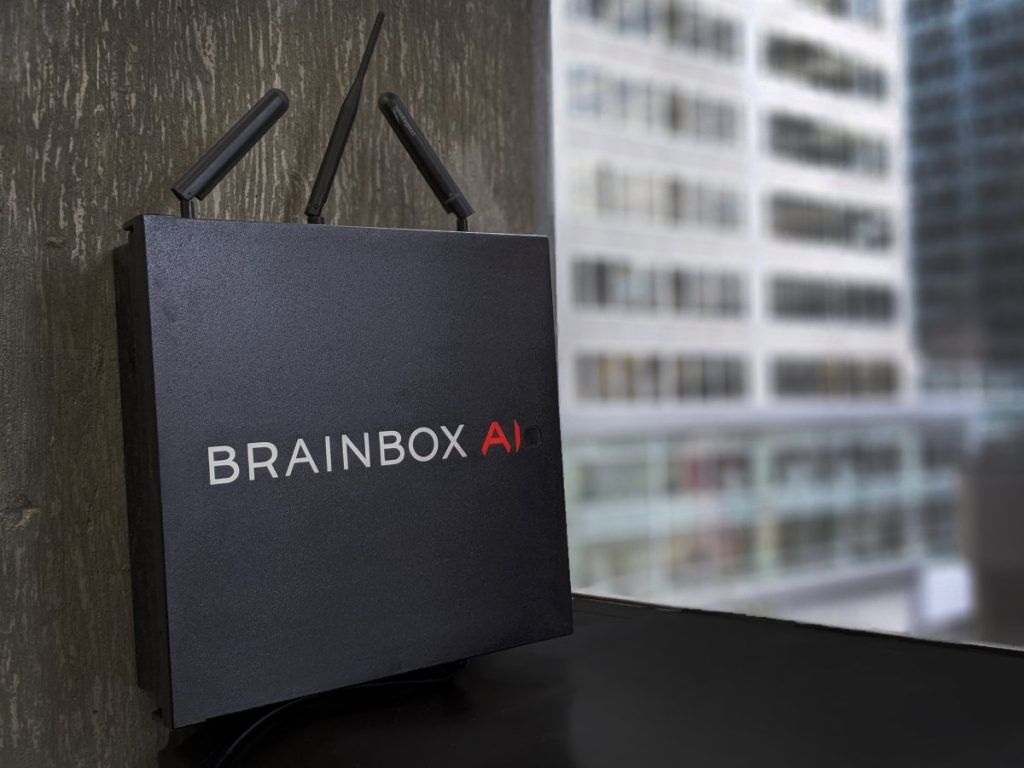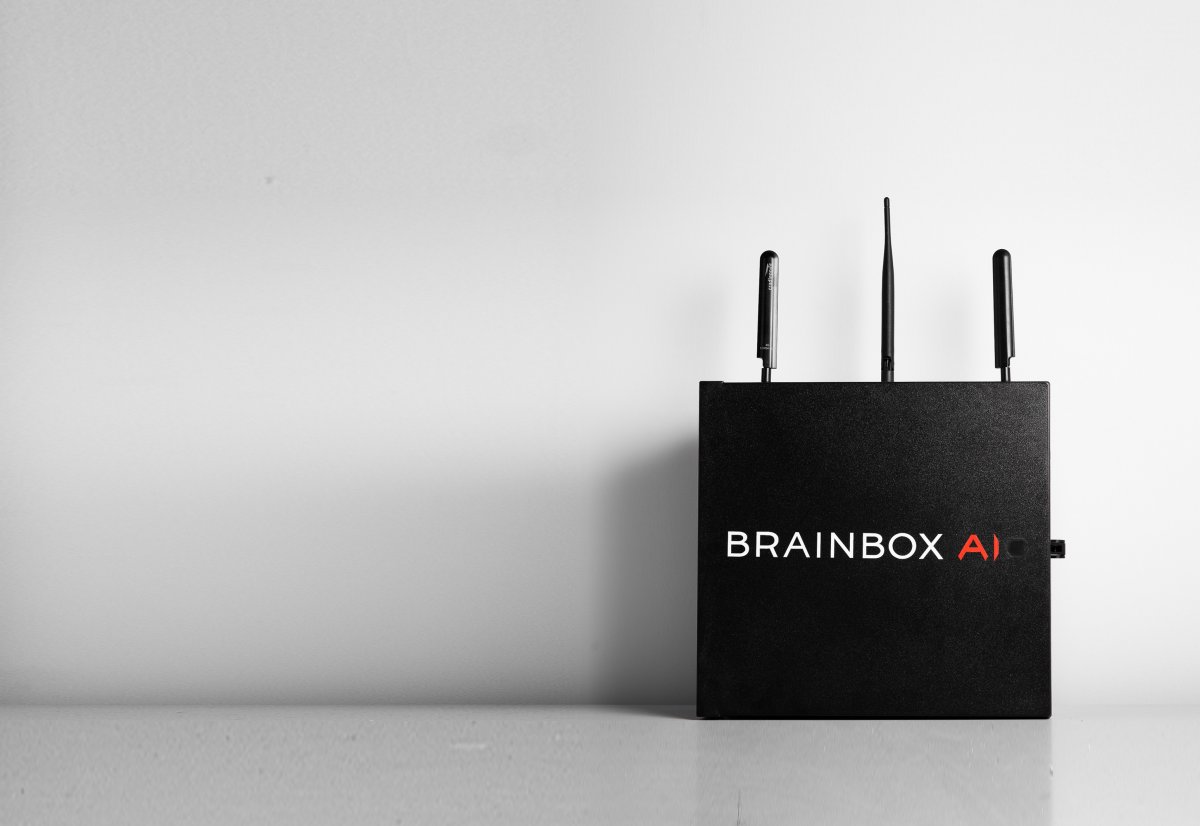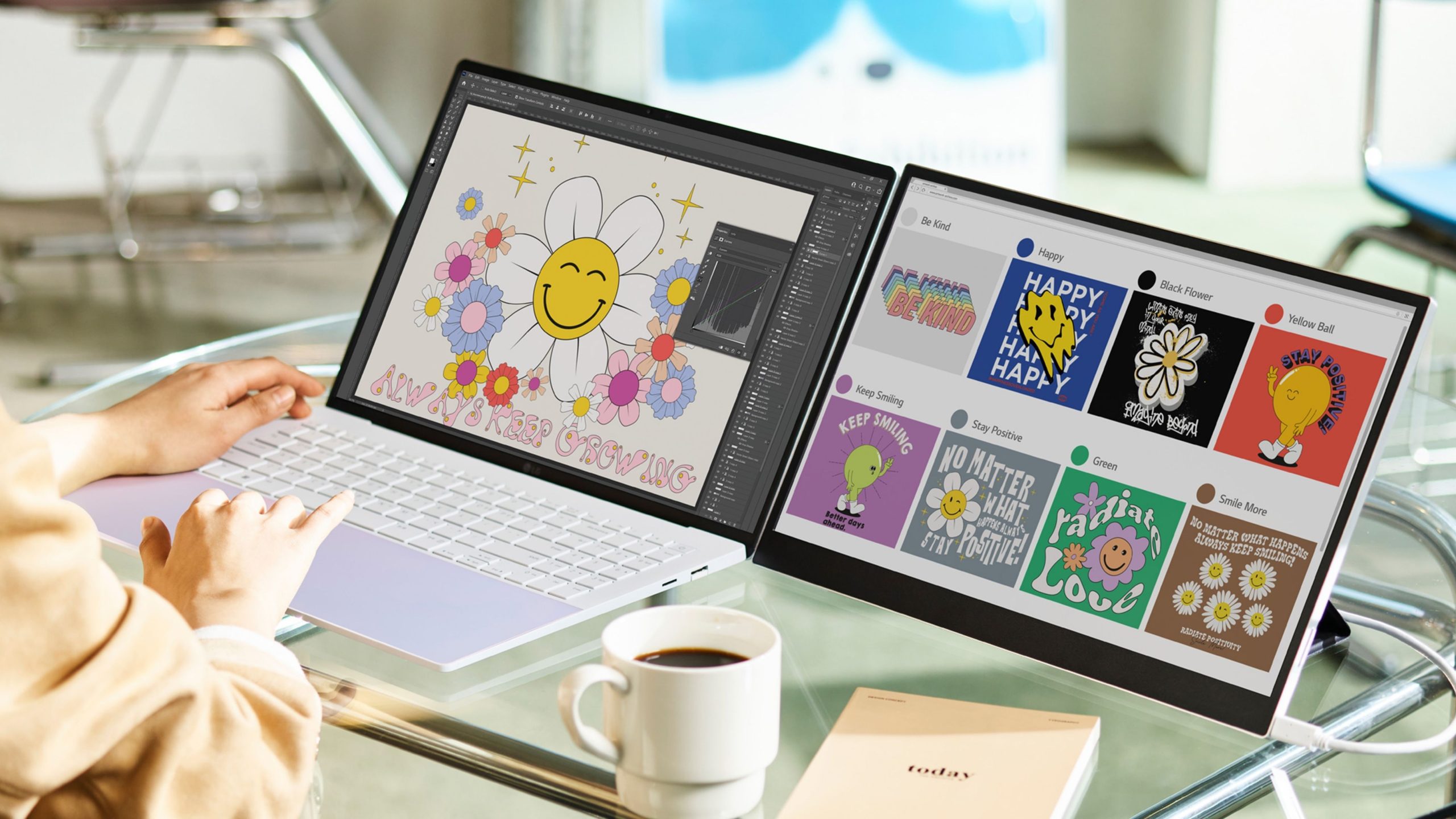When you think of greenhouse gas emissions your mind might jump to planes, trains, and automobiles, but did you know that the third leading source of greenhouse gas emissions is buildings? They produce 20 percent of Canada’s total emissions, and half of a buildings’ emissions come from inefficient HVAC (heating, ventilating, air conditioning) systems. The team behind BrainBox AI saw a huge opportunity to cut down on this cause of emissions while adding value for business managers and the users of a building.
BrainBox AI is a piece of deep learning technology that remotely tracks and controls the heating and cooling in a building. It takes into account all the data that your HVAC system collects and stores it to meet multiple objectives. And increases comfort for the people using the building at the same time, “It’s trying to lower the cost of operating and lower the quantity of energy that is spent in that building [and it’s doing that] 24/7,” said Jean-Simon Venne, Chief Technical Officer and Co-Founder of BrainBox AI.
According to the company, 30 percent of a building’s energy consumption is wasted. So, by installing BrainBox AI, a building’s carbon footprint can be reduced by 20 to 40 percent, an impact that can push Canada towards its newly accelerated climate goals.
When Prime Minister Justin Trudeau set a new target to reduce greenhouse gas emissions by 40 to 45 percent by 2030, it seemed like a stretch. But widely implementing BrainBox AI would be an excellent start to reach this goal.
“If we were doing this for all of the buildings in Canada we would be reaching about half of our goal for the entire country. It’s that massive in terms of emission reduction,” said Venne.


BrainBox AI is currently installed on over 109 million square feet of land and in over 15 countries but Venne said we need to move faster, “We need to deploy that technology on a massive scale, so we can have an impact on the planet and make our contribution to saving this planet. Time is the essence. We don’t have 20 years. We have a lot less than that, so we need to scale it and we need to scale it fast.”
For this week’s Startup Spotlight, Bay Street Bull spoke with Jean-Simon Venne, Chief Technical Officer and Co-Founder of BrainBox AI, about creating a business model that creates value while saving the planet.
[vc_row][vc_column][vc_text_separator title=”Q&A” color=”black” border_width=”3″][/vc_column][/vc_row][vc_row][vc_column][vc_column_text]
What does BrainBox AI do?
BrainBox AI is a small startup in Montréal that is growing fast because we put together this autonomous AI technology similar to the autonomous car that everybody knows about. But it’s for a building. It’s operating the building, more precisely the cooling, heating, and ventilation aspect, commonly called the HVAC, autonomously. Like a video game, it’s trying to do multiple-objective-optimization. It’s trying to lower the cost of operating and lower the quantity of energy that is spent in that building 24/7. It also makes sure that the equipment is running smoothly, so [that the equipment has] a longer life. [Then] we don’t need to replace them as often. It also reduces emissions of course, which is one of the key components.
And it’s doing all that while It’s trying to make the comfort more pleasant for the user. You probably all remember, there are some buildings, [with] some areas where it’s always a bit too cold or a bit too hot and we have this discomfort issue. We’re asking the AI to reduce these events as much as possible while it’s trying to save the planet. It’s doing all that deep learning without any human intervention, so it’s allowing us to scale quite rapidly since it’s similar to an app that you download.
How exactly does it work and what variables does it consider?
All the commercial buildings on our planet—and there are millions of them—all have this control system already in place, which is modulating the heating, the cooling, and the ventilation all the time. These systems generate an incredible amount of data, and it’s used in real-time by the system, and then it’s lost forever. They don’t keep that data. When you start to play with AI, what you need as the fuel is data. So when we looked at it, we said ‘the data is already there,’ we just need to go mine it and extract it, then we’re going to be able to generate value. The hard part was already done. That’s why we developed this technology that connects to these existing control systems, extracts the data in real-time, and accumulates enough in the cloud.
Then the deep learning tools start to analyze the building and they start to do, what we call, the prediction. The neural network, what they’re very good at is predicting the future if you give them enough history in a data set. We’re predicting what will happen in that building in the next six hours. We know that conference room A will be too hot in three hours and conference room B will be too cold in two hours. We see the future. And once you see the future, you have that unfair advantage. You could start to change your control strategy because you know what will be happening. It’s the preemptive control. We’re opening the field of moving from a reactive control, which you have in your apartment or your condo or your house right now, to a preventive control, because we know the future.
We control the building to build a better future. It’s like the movie Back to the Future. You go in the future and you see how horrible it is. You come back to the present and you do some small tweaks. Then you go back into the future and you see, ‘Did I change it for the better or the worst?’ And once you have that validation, then you know you have the right control strategy. So that’s what we’re doing.
How did you initially come up with this idea?
A lot of frustration. I was in the ESCO (Energy Saving Company) business. We would go into a hotel, let’s say in Dubai or Monaco and we’d inject millions of dollars [into it]. We’d do the retrofit. We’d put in a brand-new boiler. We’d put in a top-of-the-line control system. Engineers would configure all of the control sequences of Programmation. It’s state-of-the-art. Then you leave. The building, when you leave, is acting perfectly. You come back one year or two after to revisit your master project and you realize that things start to drift. And unless there is somebody that keeps tweaking it on an ongoing basis, the building will start to drift. It’s not staying super fine-tuned at the tip of the spear.
So then we thought we should leave an engineer behind us that will maintain the building at the optimal position. But that’s way too expensive and there are just not enough engineers on the planet to leave an engineer behind on each of the buildings you’re doing. So you’re checkmate and you go, ‘How can we do it?’ The aha! moment was sitting in an autonomous car and going, ‘It’s incredible.’ They’re predicting what the squirrel will do. And they’re always right. So if we could drive a car by itself and predict what the squirrel’s going to do when he’s crossing the street, I guess we should be able to do HVAC control using the same type of technology. So that was how it all came together in our heads.
Do you think that technology integration is essential to saving the planet, why or why not?
There are different schools of thought on that. My school of thought is that we’re reaching the point where to save the planet, we need to bring forward business models which are making money and that are creating value while they’re saving the planet. As long as it stays a cost equation, it’s going to be hard. Even though you put out great incentives, if it’s a cost discussion, it’s hard.
The big question is, ‘Can we use technology, especially deep learning tools, to create new business models, create value and at the same time save the planet?’
Were there any obstacles in creating your business model and bringing it to life?
It’s a passionate discussion. How do you convince humans to change the way they’re doing whatever they’re doing? We’re facing operators of buildings that have been operating buildings the same way for the last 50 years. Suddenly you’re bringing in these tools and you’re telling them, ‘You’re not going to operate a building anymore. These AI tools will, and you will become an AI coach.’
Some people embrace it and jump on the wagon, but there are a lot of other people that go, ‘I don’t want it. I don’t want to change. I’m happy the way it is.’ You need to explain that we don’t have the luxury to continue doing what we were doing, unfortunately, so you must embrace it. It’s all about change management. It’s all about convincing people to change the way they are doing things.


If I were somebody who didn’t want to change what I was doing, can you give me the elevator pitch of what you might say to me?
So if you’re a facility manager, let’s say you’re in charge of a big tower in downtown Toronto. You are usually coming at seven in the morning and you’re checking what type of night you had. Then you’re going to start fixing the different problems that happened during the night. Then there’s a contractor coming around 10 a.m. and you need to take care of him because he needs an explanation of what he has to do. There’s a special delivery coming in a loading dock that you need to also manage. And then two tenants are complaining that there’s a water leak. Your day goes by and then you’re going to have lunch. Eventually, by 3:30 p.m. or 4 o’clock you’re going to call it a day and go happily home. Then, nobody’s managing that building during the evening and the night.
AI is doing your job of making sure the building is optimized 24 hours a day. So, during lunch, during the weekend, during the evening, during the night, it’s giving you that opportunity to, instead of waiting for the tenant to complain, proactively see the tenant when they don’t have a problem to make sure that they’re happy and everything is okay. Because the AI is doing part of your job, it’s transforming your job and it’s transforming the experience for whoever is the user of that building.
What is BrainBox AI’s overall mission?
There’s a fascinating opportunity in commercial building. About 45 percent of the energy of the planet goes into these buildings. They are not efficient, so there’s a great opportunity to go make them eco-friendly. To do so, you need technology like the one we created. We need to deploy that technology on a massive scale, so we can have an impact on the planet and make our contribution to saving this planet. Time is the essence. We don’t have 20 years. We have a lot less than that, so we need to scale it and we need to scale it fast.
How are you going about scaling it fast enough?
We tried to make it even more eco-friendly than other technology. Right now we don’t go on site. It’s either a box that we’re shipping you and you can install it yourself or a driver that you can download and install like an application. Everything is done remotely, so it’s making the deployment of technology even more eco-friendly. The next step is to make it self-deploy. If it’s self-installed and self-deployed we don’t even need to put an engineer on it and it will just happen by itself. At that point, we release a massive scaling.
What is the Green Building Revolution and how is it pushing Canada towards its climate goals?
It’s about commercial buildings. It’s about one-third of the greenhouse gas emissions. Out of these buildings, about 60 percent [of the greenhouse gas emissions] are generated by the HVAC. That 60 percent could be cut by one-third easily if you optimize it. That’s what we call the revolution because if we were doing this for all of the buildings in Canada we would be reaching about half of our goal for the entire country. It’s that massive in terms of emission reduction. [But to do that] you need to deploy it on all of the commercial buildings of Canada. That is why we’re saying to everybody, ‘Join the revolution.’
RELATED: Start-Up Spotlight: Breathe in Clean Air with O2 Industries
What makes you guys forerunners in this space?
It rarely happens that a Canadian company is the first to create new technology. We were the first to create this technology in the world. We shone the way for big building owners and [advised them that] this is the way to go. Now we’re driving it. We intend to become the market leader. We know that eventually there’s going to be followers, but for us, it’s our technology. We’re the ones that showed it to the world and now we’re driving it.
Where do you see BrainBox AI in five or 10 years?
The AI will evolve from being agents optimizing each building to agents who work together to the benefit of the grid. To the benefit of the production of energy. So, what are the constraints on the production side? And how can these independent AI agents work together to help the production become cleaner for the planet?
It all relies on the time of day. There’s a time of day when the energy is super clean. When there [is sunlight for] solar panels and when there’s a lot of wind. There are other times of day when the energy is not clean at all because there’s no more sun. Then they start these big generators that burn gas. You want to figure out ‘Can we make sure that the generator that was going to be burning gas will not start?’
That is what is dirty. It’s not the solar panel. This is where I see it’s going to evolve. These Swarm AI are going to try to help the production side.
How do you think BrainBox AI is changing the tech landscape in Canada?
I think we’re showing the example that you can use deep learning to create a business model. Canada is one of the leaders in the world in publications on deep learning. Toronto and Montréal are generating an incredible amount of scientific papers every year and pushing the frontier of what is done on the academic side. Now we need to show all of the entrepreneurs in Canada that there are so many good ideas in all of these academic papers. Take that and try to create a business model that will generate value and that will create jobs. At the same time, if possible, we’ll save the planet. It’s possible, it’s feasible and it’s probably easier than you think.
What kind of feedback have you received from people in the HVAC industry and from people who’ve used BrainBox AI?
It’s a turning point. Two or three years ago, it was impossible. They thought, ‘What you’re trying to do. It’s not going to work. I cannot believe it’s true.’ Everybody was skeptical. It’s switched now. The wind just turned I would say in the last year, and now people are saying, ‘This is the way to go, I want it.’ They’re embracing that it’s possible and it’s happening. This is a new space, let’s run to it. It’s fascinating to see how we influenced the mindset of people in our given industry.
[/vc_column_text][/vc_column][/vc_row][vc_row][vc_column][vc_separator color=”chino”][/vc_column][/vc_row]
[yikes-mailchimp form=”1″ title=”1″ submit=”SUBSCRIBE”]













